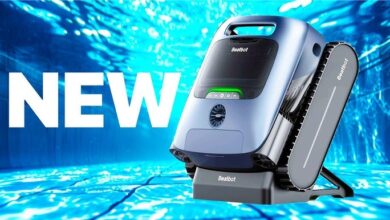PlugboxLinux About Features: Discover What Sets This Linux OS Apart

Introduction
PlugboxLinux is an innovative Linux distribution designed to cater to both novice and advanced users who seek a reliable and customizable operating system. It blends a user-friendly interface with powerful performance capabilities, making it an attractive choice for those looking to explore Linux beyond mainstream distributions like Ubuntu or Fedora. With a focus on flexibility and user experience, PlugboxLinux provides a balanced combination of ease of use and advanced features that cater to diverse needs.
Developed to stand out in the crowded Linux landscape, PlugboxLinux targets users who value both aesthetics and functionality. Whether you’re transitioning from another operating system or diving into Linux for the first time, PlugboxLinux offers an intuitive experience without sacrificing the depth of customization. Compared to other popular Linux distributions, PlugboxLinux aims to provide a more streamlined setup process, enhanced security features, and a customizable desktop environment that appeals to both casual users and tech enthusiasts.
In this article, we will delve into the key features of PlugboxLinux, guide you through its installation and setup, explore advanced customization options, and compare it with other Linux distributions. By the end, you’ll have a comprehensive understanding of what PlugboxLinux offers and how it can enhance your computing experience.
Key Features of PlugboxLinux
User Interface and Desktop Environment
One of the standout features of PlugboxLinux is its customizable desktop environment, designed to offer both functionality and aesthetic appeal. The user interface is sleek and modern, providing a clean and intuitive layout that makes navigation straightforward. Users can choose from various themes, icon sets, and wallpapers to tailor their desktop environment to their personal preferences. This level of customization ensures that users can create a workspace that not only looks good but also enhances productivity.
The desktop environment of PlugboxLinux includes a suite of built-in applications and tools designed to meet everyday needs. From productivity software to multimedia players, the operating system comes pre-loaded with essential applications that are easy to access and use. This approach minimizes the need for additional software installations, making it an ideal choice for users who prefer a ready-to-use system out of the box. Additionally, the operating system supports various third-party applications, allowing users to expand their toolset as required.
Performance and Stability
Performance is a critical factor for any operating system, and PlugboxLinux does not disappoint in this regard. The distribution is optimized to run efficiently on a wide range of hardware, from older machines to modern high-performance systems. Its lightweight design ensures that system resources are utilized effectively, providing a smooth and responsive user experience.
Stability is another key aspect where PlugboxLinux excels. The operating system undergoes rigorous testing and quality assurance processes to ensure that it performs reliably under various conditions. Regular updates and patches are released to address any potential issues and enhance system performance. This focus on stability makes PlugboxLinux a dependable choice for both personal and professional use, minimizing the risk of unexpected crashes or slowdowns.
Security Features
Security is paramount in today’s digital age, and PlugboxLinux prioritizes it by incorporating several built-in security measures. The operating system includes robust firewall protection, ensuring that unauthorized access to your system is blocked. Additionally, PlugboxLinux features regular security updates and patches, which are essential for protecting against emerging threats and vulnerabilities.
The distribution also supports advanced security practices, such as encryption and secure authentication methods. Users can enable disk encryption to protect their data from unauthorized access, and two-factor authentication adds an extra layer of security to user accounts. These features collectively contribute to a secure computing environment, making PlugboxLinux a suitable choice for users who prioritize data protection and privacy.
Compatibility and Integration
PlugboxLinux is designed to be highly compatible with a wide range of hardware and software. It supports various types of hardware, from legacy devices to the latest components, ensuring that users can install and run the operating system on their existing machines. This broad hardware compatibility makes PlugboxLinux a versatile choice for users with different types of equipment.
In terms of software, PlugboxLinux integrates seamlessly with various platforms and services. Users can easily connect to online services, manage files in the cloud, and utilize popular software applications. The operating system’s compatibility with third-party applications further extends its functionality, allowing users to install and use a diverse range of tools and programs.
Installation and Setup
System Requirements and Preparations
Before installing PlugboxLinux, it is essential to ensure that your system meets the minimum hardware requirements. While the distribution is designed to be lightweight, certain specifications are necessary to achieve optimal performance. Typically, you’ll need a computer with at least 2 GB of RAM, a 1 GHz processor, and 20 GB of free disk space. Checking these requirements beforehand will help you avoid any installation issues.
Preparation is a crucial step in the installation process. Begin by backing up any important data on your system, as the installation process may involve formatting your hard drive. Next, download the PlugboxLinux installation image from the official website and verify its integrity using provided checksums. This step ensures that you are using an uncorrupted version of the operating system.
Step-by-Step Installation Guide
The installation process for PlugboxLinux is designed to be user-friendly and straightforward. Start by creating a bootable USB drive or DVD with the downloaded installation image. You can use tools like Rufus or balenaEtcher to facilitate this process. Once you have your bootable media, insert it into your computer and restart the system.
During startup, access the boot menu (usually by pressing a key like F12 or Esc) and select the bootable media as the primary boot device. Follow the on-screen instructions to begin the installation process. You’ll be prompted to choose your language, time zone, and keyboard layout. After these initial settings, you’ll need to partition your disk and select the installation location.
The installer will then proceed with the installation, copying files and configuring the system. Once completed, you’ll be prompted to remove the installation media and reboot your system. After restarting, complete the initial setup by creating user accounts and configuring system preferences.
Troubleshooting Common Installation Issues
Despite the straightforward nature of the installation process, users may encounter some issues. Common problems include errors related to disk partitioning or bootloader configuration. If you experience issues, consult the PlugboxLinux forums or official documentation for troubleshooting tips.
For example, if you encounter a “No bootable device found” error, ensure that your bootable media is correctly created and inserted. Additionally, verify that your BIOS settings are configured to boot from the USB or DVD drive. For issues related to disk partitioning, double-check that you have allocated sufficient space for the operating system and that your disk partitions are correctly set up.
Advanced Customization and Usage
Personalizing the Desktop Environment
PlugboxLinux offers extensive customization options to personalize your desktop environment. Users can modify the appearance of their desktop by changing themes, icons, and wallpapers. The operating system provides a range of pre-installed themes, but users can also download additional themes from online repositories.
Customizing your desktop environment involves adjusting settings through the system’s configuration tools. You can access these tools from the settings menu, where you can modify various aspects of your desktop, including window behavior, icon placement, and panel layout. The flexibility offered by PlugboxLinux allows users to create a workspace that aligns with their personal preferences and enhances their productivity.
Advanced Configuration Options
For users who enjoy diving deeper into system customization, PlugboxLinux provides advanced configuration options. The operating system supports various command-line tools and scripts that allow for fine-tuning and optimization. For instance, users can modify system settings through configuration files or use command-line utilities to adjust performance parameters.
System tuning involves adjusting settings to optimize resource usage and improve overall performance. This can include managing startup applications, adjusting system services, and optimizing memory usage. By leveraging these advanced configuration options, users can tailor PlugboxLinux to meet their specific needs and preferences.
PlugboxLinux for Development and Programming
PlugboxLinux is well-suited for development and programming tasks, offering a range of tools and environments to support various programming languages and frameworks. The operating system includes a selection of development tools, such as integrated development environments (IDEs), text editors, and version control systems.
Developers can easily install and configure programming languages like Python, Java, and C++, as well as frameworks and libraries used in modern development. PlugboxLinux also supports containerization technologies like Docker, enabling developers to create and manage isolated development environments. This versatility makes PlugboxLinux a valuable platform for both amateur and professional developers.
Comparison with Other Linux Distributions
PlugboxLinux vs. Ubuntu
When comparing PlugboxLinux to Ubuntu, several key differences and similarities stand out. Ubuntu is known for its user-friendly interface and extensive community support, making it a popular choice for beginners. In contrast, PlugboxLinux emphasizes customization and advanced features, catering to users who seek a more tailored experience.
While Ubuntu offers a stable and well-supported environment, PlugboxLinux provides a higher degree of customization and flexibility. This makes PlugboxLinux an appealing choice for users who prefer a more personalized computing experience, while Ubuntu remains a solid option for those seeking a straightforward and widely-supported distribution.
PlugboxLinux vs. Fedora
Fedora is another popular Linux distribution known for its cutting-edge features and emphasis on open-source software. In comparison, PlugboxLinux offers a more balanced approach, combining modern features with a focus on user customization. Fedora is often favored by users who prioritize the latest software and technologies, while PlugboxLinux appeals to those who seek a blend of stability and flexibility.
Both distributions offer robust performance and security features, but PlugboxLinux provides additional customization options and a user-friendly setup process. Fedora’s focus on innovation contrasts with PlugboxLinux’s emphasis on providing a customizable and reliable computing environment.





